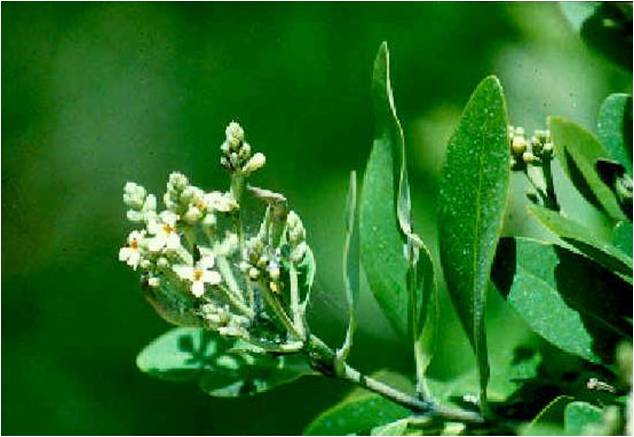Mangroves are trees and shrubs that grow in tropical and subtropical tidelands throughout the world. Mangroves grow in areas that are frequently inundated with salt water due to tidal activity of gulfs, seas and oceans. Mangroves are able to thrive salt water inundation because of specialized rooting structures (such as prop roots and pneumatophores), specialized reproduction (vivipary or live birth) and the ability to exclude or excrete salt. Mangroves grow exclusively in these tidal areas in large stands or groves to where these areas are referred to as their own ecological community, collectively called mangroves.
In Florida, mangroves include three tree species: red mangrove (Rhizophora mangle), black mangrove (Avicennia germinans), and white mangrove (Laguncularia racemosa). Each mangrove species has a different level of salt tolerance, which in part determines its location in tidal zones.
Why Are Mangroves Important?
The mangrove community is valued for its protection and stabilization of low-lying coastal lands and its importance in estuarine and coastal fishery food chains. Mangrove forests protect uplands from storm winds, waves and floods. The amount of protection afforded by mangroves depends upon the width of the forest. Mangroves can help prevent erosion by stabilizing shorelines with their specialized root systems.
The relationship between mangroves and their associated marine life cannot be overemphasized. Mangroves provide protected nursery areas for fishes, crustaceans and shellfish. Seventy-five percent of the game fish and 90 percent of the commercial species in south Florida are dependent on mangrove ecosystems (Law and Pywell FRC-43). They provide food for a multitude of marine species such as snook, snapper, tarpon, jack, sheepshead, red drum, oysters and shrimp.
Many animals find shelter either in the roots or branches of mangroves. Mangroves serve as rookeries, or nesting areas, for beautiful coastal birds such as brown pelicans and roseate spoonbills.
Mangrove Pruning Regulations:
Since July 1, 1996, Lee County has generally not been involved in the regulation of mangrove trimming. Mangrove trimming is regulated by the Florida Department of Environmental Protection through the Mangrove Trimming and Preservation Act (
Florida Statutes Sections 403.9321-403.9333).
Florida Department of Environmental Protection (DEP)
South Florida District Office
2295 Victoria Avenue, Suite 364
Fort Myers, FL 33902-2549
Telephone: 239-344-5600
Fax: 850-412-0590
Additional Information: